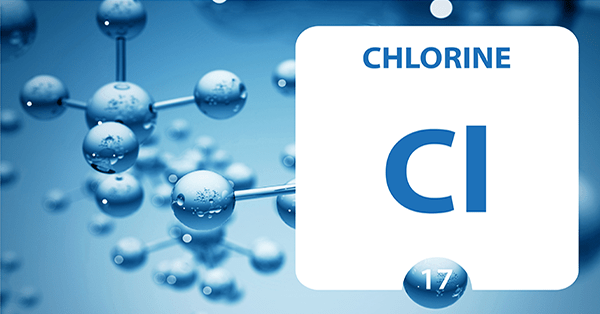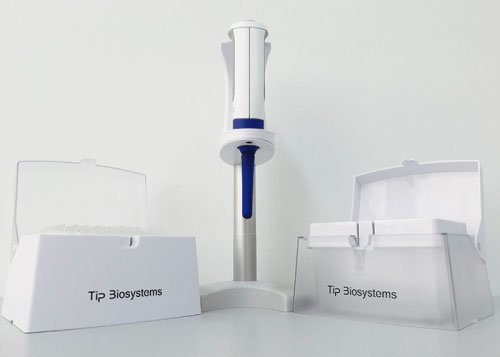Blog
Detecting & Measuring Chlorine in Water

What is Chlorine?
Chlorine is a chemical element that is a yellow-green gas at room temperature. The element is part of group 17 in the periodic table – the halogens – which accounts for many of its chemical properties, including its high reactivity.
Because of its high reactivity, chlorine is naturally present as ionic compounds. Although it is commonly found within the earth’s crust, chloride is also found in sea water in the form of brine.
The majority of elemental chlorine that is commercially produced comes from brine, before it is used for a range of different purposes.
Uses of Chlorine
Chlorine has a wide range of industrial and commercial applications.
Approximately 20% of all chlorine produced is used to make PVC, a versatile plastic used in window frames, pipes and flooring.
Another major use of chlorine is within organic chemistry. It is used within most chemical reactions, with 85% of pharmaceuticals using it at some stage within the manufacturing process.
Additionally, chlorine is commonly used as a disinfectant. It is often associated with disinfectants of swimming pools, but has far wider use within the water industry.
Chlorine Treatment in Water
Most people are aware of the use of chlorine as a disinfectant in swimming pools, but chlorine is commonly used in the treatment of drinking water also.
Chlorine doesn’t work as a disinfectant in its gaseous form, instead it forms analogues such as hypochlorous acid, hypochlorite and hydrochloric acid to do so.
The Presence of Chlorine in Water
Due to the chemical properties that chlorine possesses as a halogen, it makes it a highly effective disinfectant. It is commonly added to water to kill diseases that can be caused by bacteria, parasites and viruses that grow within water supplies.
When chlorine is added to water, it forms hypochlorous acid (HOCl) in equilibrium with chlorine and hydrochloric acid (HCl), as shown below:
Cl2 + H2O ↔ HOCl + HCl
In aqueous solutions with set conditions, hypochlorous acid can dissociate into hypochlorite ions (ClO-):
HOCL ↔ ClO– + H+
Depending on the pH will determine how much of the hypochlorous acid will dissociate into hypochlorite ion. At pH 4, hypochlorous acid is present at 100%, dropping down to 0% at pH 11, and vice versa for hypochlorite.
Although both molecules disinfect water, hypochlorous acid is the most effective of the two.
Hypochlorous acid is commonly used as a disinfectant due to its ability to penetrate the cell wall and destroying enzymes and proteins by its oxidative activity.
Free Chlorine, Combined Chlorine and Total Chlorine
When it comes to measuring the presence and concentration of chlorine, there are multiple forms to which chlorine is referred – free chlorine, combined and total chlorine.
1. Free Chlorine
Free chlorine is used in reference to all of the chlorine present in a water sample, as Cl2, HOCl and OCl.
As soon as free chlorine is added to water samples, it quickly reacts with contaminants. This will result in free chlorine becoming combined chlorine.
2. Combined Chlorine
Combined chlorine refers to free chlorine that forms with organic amines or ammonia that are present in water. Once chlorine becomes combined, it can no longer act to disinfect or sanitise.
This happens when chlorine is added to water, forming hypochlorous acid and hypochlorite ions, which are both reactive forms of chlorine.
Combined chlorine can be problematic, not only for the fact that it can no longer act as a disinfectant, but due to the pH imbalance it can cause. This can lead to a cause of corrosion for metals.
3. Total Chlorine
Total chlorine is the sum of both free chlorine and combined chlorine.
It is important to know the difference between all three forms of chlorine, as they can affect how you measure chlorine in water samples.
Impact of Chlorine in Water
Like with the use of chemicals in most industrial applications there are drawbacks to using it.
1. Taste and Odour
Chlorine has a distinctive odour and taste, which is noticeable in drinking water when it is added. Although it is considered safe up to levels of 4 ppm, many people can taste and smell its presence in treated water. Levels above 4 ppm can have more severe consequences.
2. Health Issues
There are a number of health issues that have been associated with chlorine-containing compounds used in water.
They start with mild health issues such as asthma or allergies and have been linked to more severe issues such as congenital abnormalities and cancers.
3. Aquatic Impact
Free chlorine is known to be toxic to aquatic organisms such as fish. Chlorine damages the gill structure of fish, which can make it harder for them to breathe, which is made worse as the pH level is decreased.
4. Safety Concerns
Pure chlorine is extremely volatile and hazardous, which means that it needs to be transported and processed properly. Due to the highly hazardous nature of chlorine, even the smallest accidents can have a large impact on human and environmental health.
5. Toxic By-Products
The reactivity of chlorine is one of its properties that makes it so useful as a disinfectant in water, however, it can easily form unwanted compounds that can be toxic in nature. It is crucial that these by-products undergo further processing to ensure they are removed and don’t find their way into the environment.
Testing For Free Chlorine
Testing free chlorine concentration in solution typically uses methods that prioritise ease of use over accuracy.
1. Test Strips
One of the simplest methods for measuring free chlorine is via the use of test strips. Dipping the strips in solution will change colour corresponding to a chlorine concentration. Test strips are easy to use, but are likely to be inaccurate and prone to error.
2. Colour Wheel
A method for measuring free chlorine is via the DPD method, typically at the 0.1-2.0 mg/L range. The DPD indicator and buffer solution are mixed with the chlorine-containing water samples, forming a pink solution.
Using a series of colours from a colour wheel, it is possible to approximate free chlorine concentration in a sample.
3. Colorimeter
In a process almost identical to the method listed above, digital colorimeters are used in place of colour wheels, to accurately measure the colour intensity by emitting a wavelength and determining the colour intensity.
This allows for greater accuracy with typically a larger measurement range.
Free Chlorine Testing with Photopette® Aqua
Typical free chlorine testing is simple and straightforward, where test methods have been created for ease-of-use. Unless using a colorimeter, testing is typically inaccurate or open to error.
As a new alternative to free chlorine testing we offer the Photopette® Aqua. The product is a handheld device that contains a digital colorimeter which can measure free chlorine, as well as analytes such as ammonia, nitrate, nitrite, phosphate and more.
Photopette® Aqua is suitable for water testing, both in the lab and the field. The device is waterproof, dustproof and very durable and because it is so easy to use, only minimum training is required. Photopette® Aqua allows for simple free chlorine testing, whilst providing better accuracy and precision of results.
Featuring five inbuilt calibrations for Merck Spectroquant® water test kits, it can measure a total of 18 analytes from the Spectroquant® family.

Removal of Chlorine
Once you have tested your water sample for the presence of free chlorine, it is likely that you are going to want to do something about it. Below are a few methods for removing free chlorine from your water.
1. Neutralisation
For neutralisation to happen, additional chemicals are added to water, typically in the form of a tablet. The chemicals react with free chlorine, neutralising it, before it evaporates from the water.
2. Evaporation
Chlorine is naturally removed from water via evaporation, but the rate of evaporation will depend on multiple factors.
Because of the volatility of chlorine, it will naturally evaporate from water. The rate of evaporation will be increased where temperature of water and air is increased, where there is a greater surface area of air to water or where water is agitated.
3. Filtration
Chlorine can be removed from water via reverse osmosis. Water is pressured to pass through a semi-permeable membrane which removes chlorine and other contaminants from the water.
- How Much Chlorine Is In Drinking Water?
The WHO states that the level of chlorine present in disinfected drinking water is typically between 0.2 – 1.0 mg/L. The amount of chlorine present in your drinking water will depend on your geographical location as well as how your water is treated. - Is It Safe To Drink Water With Chlorine?
Drinking water containing chlorine is considered to be safe by many countries and governments, even in excess of the 1.0 mg/L stated by WHO. - Are High Levels of Chlorine in Water Bad?
What is considered a ‘high level’ of chlorine will vary on a case-by-case basis with different levels of free chlorine required for drinking water, or to disinfect a swimming pool for example.

